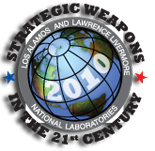
Contacts
 |
Conference Summary (pdf)Over 160 participants joined the fourth annual “Strategic Weapons in the 21st Century: Implications of Change and Our Priorities” Conference in the Ronald Regan Building in Washington, D.C., on January 28, 2010. With the international security environment continuing to evolve and with the complexity and fluidity of the emerging new world, concerns regarding nuclear energy, nuclear proliferation, and nuclear-weapon policy pose serious challenges. Nevertheless, there are growing expectations that the Obama Administration can meet these challenges. These expectations were initiated by a number of promises made by then candidate Obama and reinforced by President Obama’s seminal Prague speech. The policy announced in the Prague speech will be fleshed out in the Nuclear Posture Review (NPR), which is scheduled to be released this Spring. With the rollout of the FY 2011 President’s budget and the anticipated appearance of the NPR, along with other indicators of emerging nuclear policy found in statements by Secretary of State Clinton, Secretary of Energy Chu, Secretary of Defense Gates, Undersecretary for Nuclear Security/Administrator for National Nuclear Security Administration (NNSA) D’Agostino, and by other Administration officials, many at the conference were optimistic about the future. The Obama nuclear agenda is ambitious, and involves moving toward a world without nuclear weapons with several concrete steps, including negotiating and ratifying a New Strategic Arms Reduction Treaty (START), ratifying the Comprehensive Test Ban Treaty (CTBT), While these steps are being pursued, and until there are no nuclear weapons in the world, the Administration is committed to ensuring that US weapons will be safe, secure, and effective to guarantee deterrence for the United States, as well as its friends and allies. All of these topics were highlighted and discussed during the “Strategic Weapons in the 21st Century” conference. As the nation considers changes in the nuclear weapons complex, including the national security science laboratories, it was agreed that there is a need for NNSA and the laboratories to provide national leadership with the best in science and technology in support of nuclear deterrence policy. Strong science, technology, and engineering (ST&E) capabilities were recognized as essential for effective stockpile management. There was strong consensus at the conference that investment in this physical, scientific, and intellectual infrastructure is critical. As the President’s budget moves forward, robust funding of science programs at the national security laboratories is needed for the long-term success of the stockpile stewardship program (SSP) and to ensure that the next generation of scientists can be recruited and retained at the laboratories and within the complex. Stockpile management that increases the safety and security of the nuclear stockpile was seen as a critical and an essential goal, whereas today’s status quo was viewed as unsustainable and unacceptable in the long term. Moreover, these efforts were seen to enable arms reductions and other arms control, such as the New START negotiations in Geneva. There was also consistent advocacy for the extended deterrent in concert with stockpile “modernization” and treaty verification. This broad nuclear agenda, many argued, will help nonproliferation efforts, and the NPR will likely not only set parameters for nonproliferation, arms control, and disarmament, but also reflect US interests and commitments in these areas. During the conference, it was broadly recognized that there is no inherent conflict between an effective nuclear posture and the objectives of the NPT, and indeed they can be mutually reinforcing. As pointed out by several speakers, President Obama is offering a bold vision, one through which the Administration may be able to forge an international and domestic consensus on nuclear policy that has eluded the United States over the past two decades. The emerging consensus addresses key US objectives, including the need to ensure confidence in the safety, security, and effectiveness, along with the sustainability of the US nuclear stockpile and its supporting infrastructure; the need to deal responsibly with all weapon-usable materials around the globe; and the need to meet all our international security commitments and nonproliferation obligations. The conference participants seemed to be agreement on the need for modernizing the infrastructure, funding ST&E, and creating the conditions in which the national security laboratories will be able to recruit and retain the best and the brightest – the human capital that made the past successes of SSP possible and will be critical if future successes are to Discussions at the Conference suggested that a sustainable bipartisan consensus on nuclear policy may be centered around these stockpile and infrastructure activities, strengthened nonproliferation efforts, and various concrete steps toward the goal of a world without nuclear weapons. Further, it was widely held that as the United States continues to reduce the number of nuclear weapons anticipated from New START, they must be safe, secure, and effective nuclear forces and must provide deterrence and extended deterrence. While differences were expressed during the conference, there was broad consensus that actions needed to ensure the long-term security of the United States and its friends and allies, and to promote global security and stability, will be taken. The Director’s summaries presented at the end of the conference highlighted the challenges we have now, and will have in the future. Their discussions suggested that the United States must work hard to meet existing and emerging national security challenges, and to prudently use any new available resources. |

Conference Information
Other SW21 ConferencesPublications
|